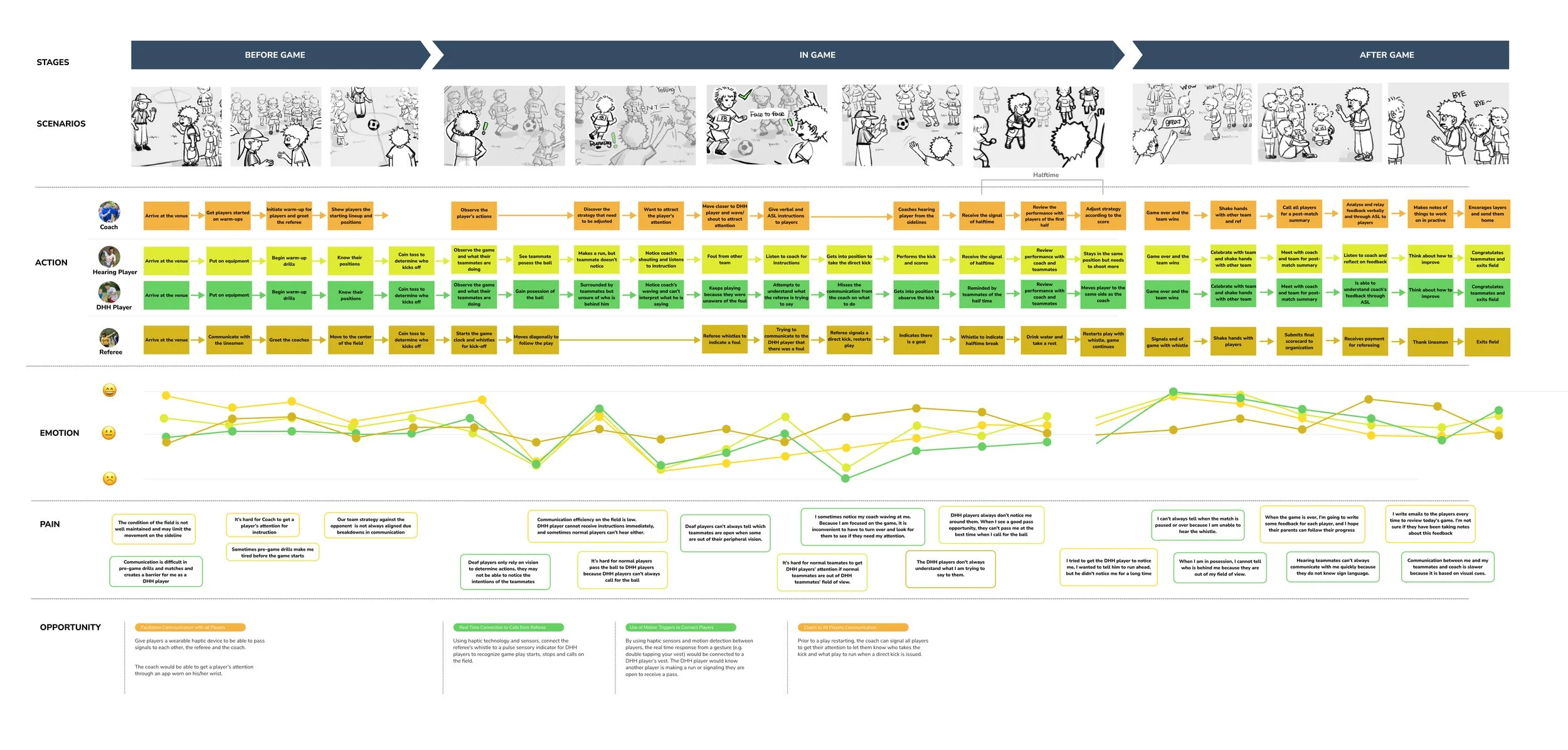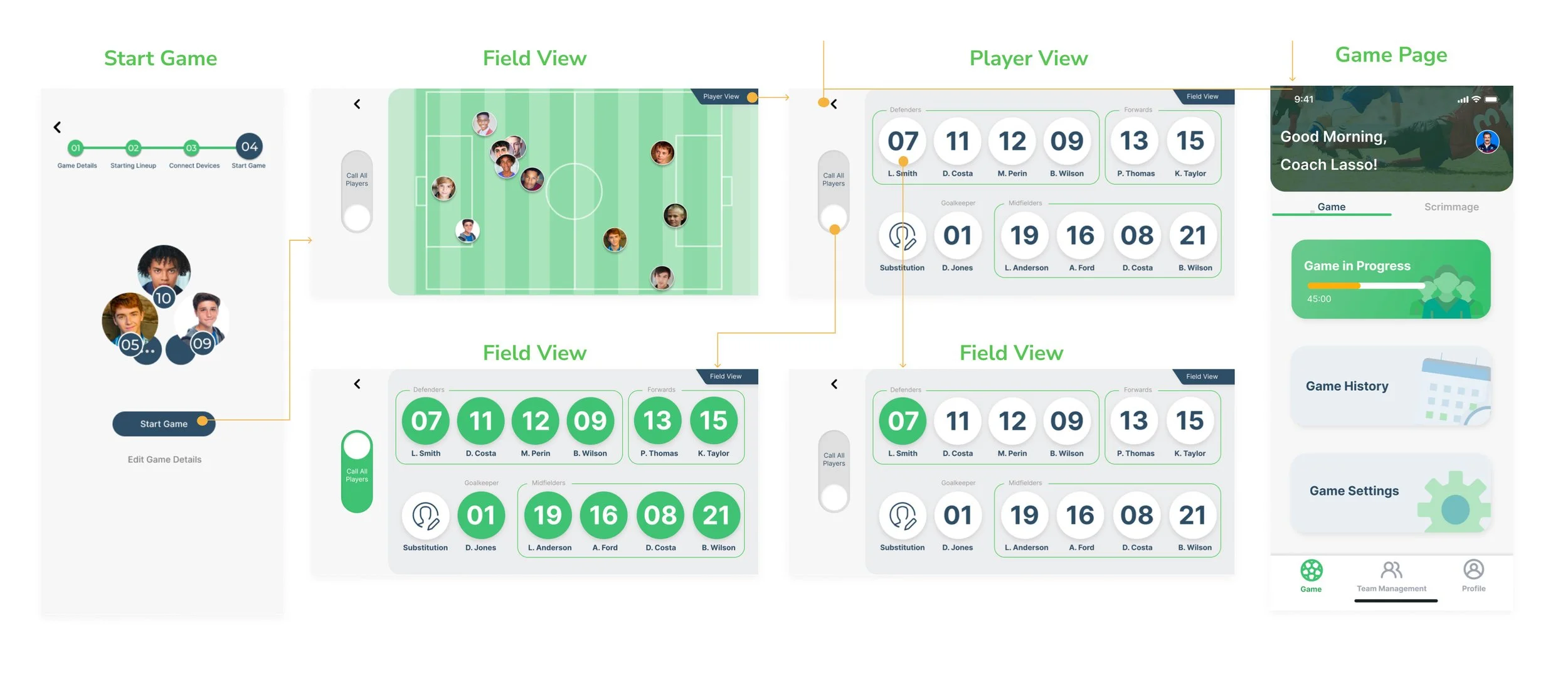HapSports
Designing an Equal Game Experience for Deaf and Hard of Hearing Soccer Players
HapSports aims to improve communication and accessibility barriers between Deaf and Hard of Hearing (DHH) players, hearing players, coaches and referees to provide an equal game experience to all athletes on the field. HapSports combines wearable technology and virtual platforms to lower communication barriers between athletes who are Deaf and Hard of Hearing (DHH), hearing players, coaches and referees during a game.
See Process Book→
The goal of this project is to conceptualize a system that combines wearable technology and virtual platforms to improve reaction times of DHH athletes. By providing DHH athletes with real time response mechanisms, they will be more aware of communication happening during a game. To begin we started by analyzing pain points during game play and developed a how might we statement based on primary and secondary research.


We defined opportunity spaces to help with lack of effective communication between players, coaches and referees. Additionally, we hoped to level the uneven playing field for DHH athletes, integrate technology into the solution and enhance the game play experience for all stakeholders. We began with brainstorming exercises around each objective. Through journey mapping, sketches, role play and storyboards, we developed a series of solutions to prototype and test.
See the journey Map→
Prototyping and testing
After identifying key pain points and opportunities, we began to brainstorm solutions and develop a connected system that could be implemented through wearable technology.
We began by understanding basic communication needs during game play between key stakeholders. We then mapped how the wearable vest could respond to different communication cues from players, coaches and the referee.
We created a set of haptic vibrators that were wired and able to be triggered by a controller. The player with the vest was followed by a player with the controller who signaled left and right directions at varying speeds of play.
The second round of testing involved an additional vest and two players acting as teammates to see if they could use the controller to signal running patterns during a simulated scrimmage.
game play solutions
-

Wearable Haptic Sensor Vest for Player to Player Communication
Haptic sensor technology assists player to player communication on the field by allowing players to signal to a teammate they are behind them. This gesture action will simulate a hearing player calling for the ball when a teammate is behind them.
-

Whistle with Sound Sensor for Referee to Player Communication
Based on the sound frequency and the pitch of the whistle, a sensor can trigger the vibration of the vest when a referee blows the whistle to call or stop a play without additional equipment. DHH players will be able to better respond based on this haptic indicator.
-

Coaching APP App Assistant for Coach to Player Communication
The digital application runs on a phone and is used by the coach to gain the attention of players. Coaches are able to get the attention of DHH players without having to resort to waving and other inefficient forms of visual communication.
The control operations for the coach was dependent on an easy team set-up and game management system.
During the game, the app was designed to be easy to tap with large buttons to call for an individual player or to get the attention of the entire team. It would also be able to fit into a wrist holder in order to allow both hands to be free to sign.
See Prototype of the App→
IACT710 Theory of Interaction Design; Professor Clark DeLashmet Project Team: Stephen Mok, M.F.A. Visual Effects • Xiaomeng Bian, M.A. Design Management • Wendan Guo, M.F.A. Service Design • Lu Zhang, M.F.A. Service Design









